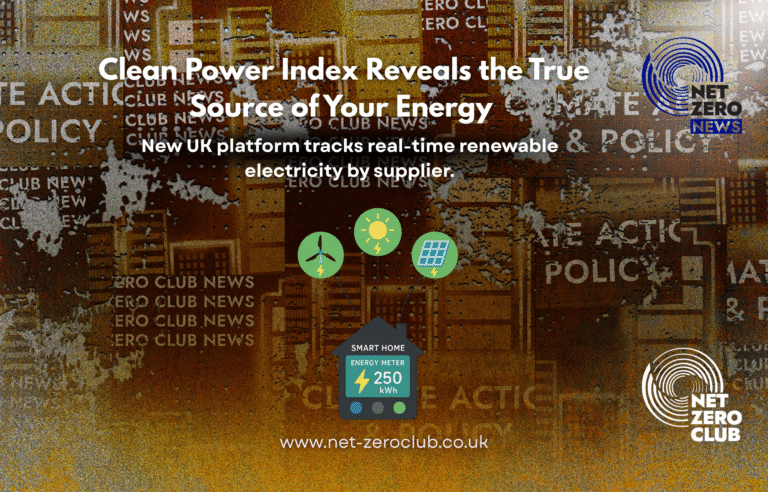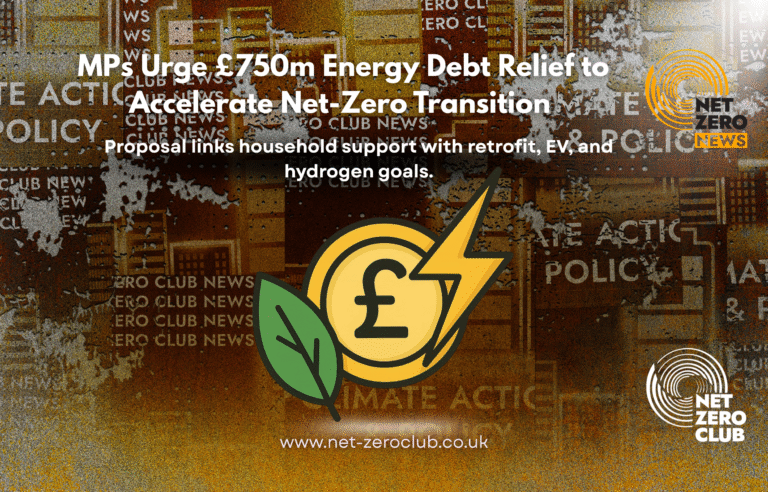Great Britain Achieves 87 Hours of 100% Clean Power in 2025

Greetings, Net Zero News Community,
In an exciting development for the clean energy sector, a recent analysis by Carbon Brief reveals that electricity demand on the island of Great Britain has been met entirely by clean energy sources for a record 87 hours in 2025 so far. This remarkable achievement is a significant leap from just 2.5 hours in 2021 and 64.5 hours throughout the entirety of 2024.
The UK government has set ambitious targets for clean energy, aiming for 95% of the electricity generated by 2030 to come from low-carbon sources. Furthermore, a crucial goal is to ensure that 100% of national electricity demand is met without relying on fossil fuels. In tandem with this, the National Energy System Operator (NESO) has set a separate target to operate the electricity grid free of fossil fuels for at least 30 minutes by the end of 2025.
Understanding the 2030 Clean Energy Goals
The government’s 2030 target is multi-faceted. It aims for 95% of electricity generation to be sourced from clean energy, with no more than 5% derived from gas. However, the second, equally important component mandates that 100% of the national energy demand must be satisfied by domestic clean electricity generation. This dual objective necessitates that the UK generates 105% of its required electricity, with any surplus available for export.
As we stand in 2025, the numbers reveal that 66% of electricity generation has come from nuclear and renewable sources, covering approximately 59% of total demand. The gap in coverage is due to net imports, which account for around 17% of demand. Clearly, while progress has been made, the targets for 2030 remain a considerable challenge.
Nevertheless, the frequency of periods where 100% of electricity demand on Great Britain’s grid has been met by domestic clean power is on the rise. The inaugural instance occurred during a 2.5-hour window from 3:30 AM to 6:00 AM on 30 December 2021, when demand averaged 24.4 gigawatts (GW) and clean energy sources produced 24.9 GW.
A Promising Trend in Clean Energy Usage
From 2022 to 2024, clean energy was sufficient to cover 100% of electricity demand for around 70 hours each year. Fast forward to 2025, and the frequency of these clean electricity periods has surged. As of 28 September, clean energy sources had met the entire electricity demand for a record 87 hours this year.
This remarkable statistic translates to approximately 1.3% of hours in 2025 thus far—still a far cry from the ambitious 2030 target but a monumental increase from the 0.03% noted in 2021, and double the 0.7% achieved in 2024.
The Role of Renewable Energy Sources
During the periods in 2025 where clean generation has surpassed 100% of demand, wind power has been the star performer, contributing an impressive 72% of the total supply. This was followed by nuclear energy at 18%, solar power at 10%, biomass at 4%, and hydro at 1%. Collectively, these low-carbon sources have generated 105% of national demand during these hours.
Interestingly, gas still played a role, contributing an average of 13% of demand, which enabled the country to export the equivalent of 19% of demand through interconnectors with countries such as Ireland, France, Belgium, Denmark, Norway, and the Netherlands.
Highlighting Key Milestones
The latest noteworthy instance when clean generation met 100% of demand occurred early on Friday, 12 September 2025. For a four-hour span from 2 AM to 6 AM, clean energy sources generated an average of 23.5 GW, including 19.1 GW from wind and 3.3 GW from nuclear. This output exceeded the average demand of 22.7 GW, while gas still contributed 3.1 GW, resulting in net exports of 4.3 GW.
Moreover, the record for the longest continuous stretch where clean energy met 100% of demand currently stands at 15 hours, from midnight on 25 May 2025 until 3 PM on 26 May. Achieving such milestones is vital if the UK aims to extend these records from mere hours in 2025 to a full year by 2030.
Challenges Ahead
To meet its clean energy target, the government will need to push beyond the current achievements and ensure a consistent supply of clean energy. A significant upcoming test will occur during the seventh auction round for “contracts for difference” (CfDs), which provides fixed-price government-backed deals for new clean energy developers. The outcomes of this auction are expected to be announced as soon as December 2025.
In the interim, NESO is committed to meeting its target—initially set in 2019—of running the Great Britain electricity grid without any fossil fuels for a short period, a milestone they term “zero-carbon operation.” It is crucial to note that this target is specific to the transmission grid, effectively the energy network’s main arteries, which excludes significant contributions from smaller onshore wind farms and solar power.
A Bright Future for Clean Energy
Craig Dyke, NESO’s director of system operations, has previously stated that the first-ever period of at least 30 minutes of “zero-carbon operation” is likely to occur this autumn. He expressed confidence that NESO would meet this target, declaring it to be “absolutely groundbreaking and pretty much world-leading.”
As we look ahead, the journey to a fully decarbonised grid is both challenging and promising. The strides made in just a few years demonstrate the potential for a sustainable energy future, powered by renewable sources. The progress made so far, while impressive, calls for continued innovation, investment, and commitment from all stakeholders involved in the energy sector.
In conclusion, while the path to achieving the UK’s 2030 clean energy targets is fraught with challenges, the record hours of clean energy coverage this year signal a growing momentum towards a sustainable future. The commitment of both the government and the National Energy System Operator to prioritise clean energy generation is a crucial step in the right direction, ensuring that future generations will inherit a cleaner, greener planet.
Let us keep our eyes on the horizon and continue to champion the transition towards net-zero emissions!

 Got net-zero news, project updates, or product launches to share?
Got net-zero news, project updates, or product launches to share? 



